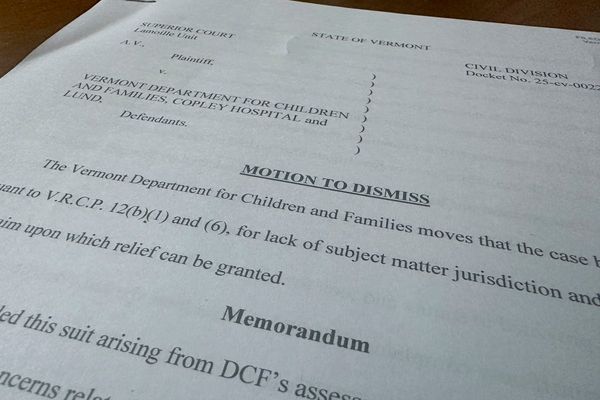
Transport Minister David Parker told Cabinet 'prima facie, it is likely' the Government's new motorways will increase emissions but ministers decided to build the roads anyway, Marc Daalder reports
A series of new motorway projects proposed by the Government will increase emissions even though the country's climate plan sets a "high bar" for approving new transport investments that are inconsistent with emissions-reduction objectives, according to Cabinet documents.
Now, the Green Party is accusing Labour of violating the Emissions Reduction Plan it signed up to with great fanfare last year, while Transport Minister David Parker says his party has done no such thing.
The 10-year Strategic Investment Programme which accompanied the draft Government Policy Statement on transport last week pledged around 75 new kilometres of state highways around the country. The extra driving demand created by those shiny new motorways would be expected to release an additional 150,000 tonnes of carbon dioxide a year, a Newsroom analysis based on transport consultancy MRCagney's induced demand calculator has found.
READ MORE: * Commuters face hit, more transport debt * National's roads equal to eight weeks a year of Huntly coal-burning * Welcome to Motorway Appreciation Month
That's the equivalent of an extra three-and-a-half weeks of burning coal at the Huntly Power Station, or an extra 55,000 cars on the road.
None of this was a surprise to the Government either. In the Cabinet paper behind the draft Policy Statement, Parker wrote to fellow ministers that the exact emissions impacts would be assessed when the final version went to Cabinet.
"However, ministers should be aware now that, prima facie, it is likely that the roading components of the Strategic Investment Programme will increase emissions. This means that the emissions reductions required in other parts of the next version of the emissions plan will be increased. This will likely include increased decarbonisation of the transport fleet," Parker wrote.
Later on, he said the need to implement the plan – which is the core document guiding the country's climate response and transition to net zero emissions by 2050 – didn't outweigh other priorities. The path he backed "allows for a balance between our emissions objectives, the other transport strategic priorities and our fiscal objectives".
The climate plan set steep targets for transport over the next 15 years. One of the ways to meet those targets was to "require new investment for transport projects to demonstrate how they will contribute to emissions-reduction objectives and set a high threshold for approving new investment for any transport projects if they are inconsistent with emissions-reduction objectives".
Julie Anne Genter, the Green Party's transport spokesperson, said the Government was not acting in line with the emissions plan any longer.
"They are totally inconsistent with the Emissions Reduction Plan. Either we're investing in infrastructure that's going to enable people to move around while reducing emissions or we're not," she said.
"The minister used the word 'balance' in the Cabinet paper and essentially that means not achieving the reductions that we are committed to and the paper says further that means more reductions will have to be made in other areas. But at this point, it's hard to see where that could come from because we already know we need to pull every lever in order to achieve our goals."
If the roads did go ahead, Genter said, it would be "impossible" to meet New Zealand's climate targets.
Parker disputed this, saying the draft transport plan wasn't inconsistent with the climate plan.
"The emissions reduction plan does not say, and could not in practice say, no new investment in roads," he told Newsroom. "The Government Policy Statement is just one component of enabling emissions reductions in the transport sector. Some of the plan actions relate to such investment, while others require different interventions such as regulatory change to improve the make-up of the vehicle fleet."
He added that the Government was still committed to the targets set for transport in the plan, including a goal to reduce the total number of kilometres driven in 2035 by light vehicles by 20 percent, from where it would be in a business-as-usual scenario. That equates to around a 2 percent decrease from present levels, due to population growth.
"This GPS continues this Government’s demonstrated commitment to investment in public transport. Four of the first five strategic investment priorities listed in the GPS are for public transport projects," Parker said.
"The GPS provides funding for public transport services, infrastructure, the rail network, walking and cycling improvements, coastal shipping, and inter-regional public transport. Our strategic investment priorities include providing better public transport options on high-traffic corridors, such as the planned North-Western Busway on SH16 in Auckland."
While an earlier version of the draft GPS was supposed to be more focused on emissions reductions, the document was re-worked significantly earlier in the year. Labour says this is because of Cyclone Gabrielle, but Genter doesn't buy that.
"It's not changed because of the cyclone, it's changed because of Chris Hipkins," she said. "He doesn't believe in or understand the opportunities of investing in alternatives to get to a balanced transport system."







